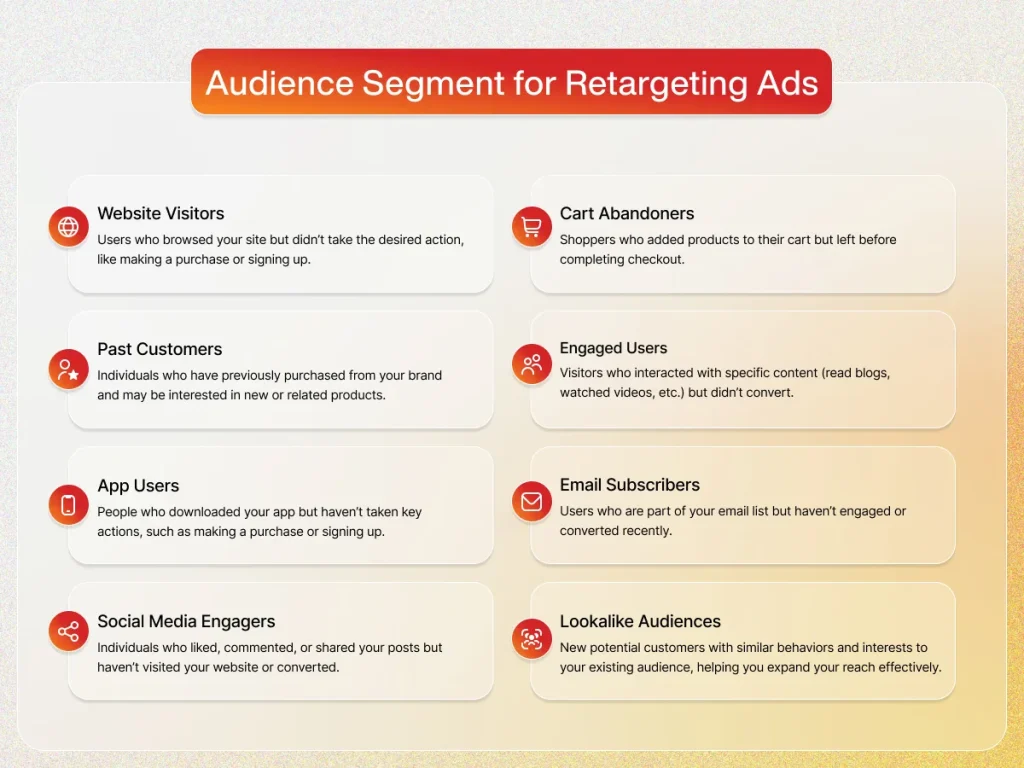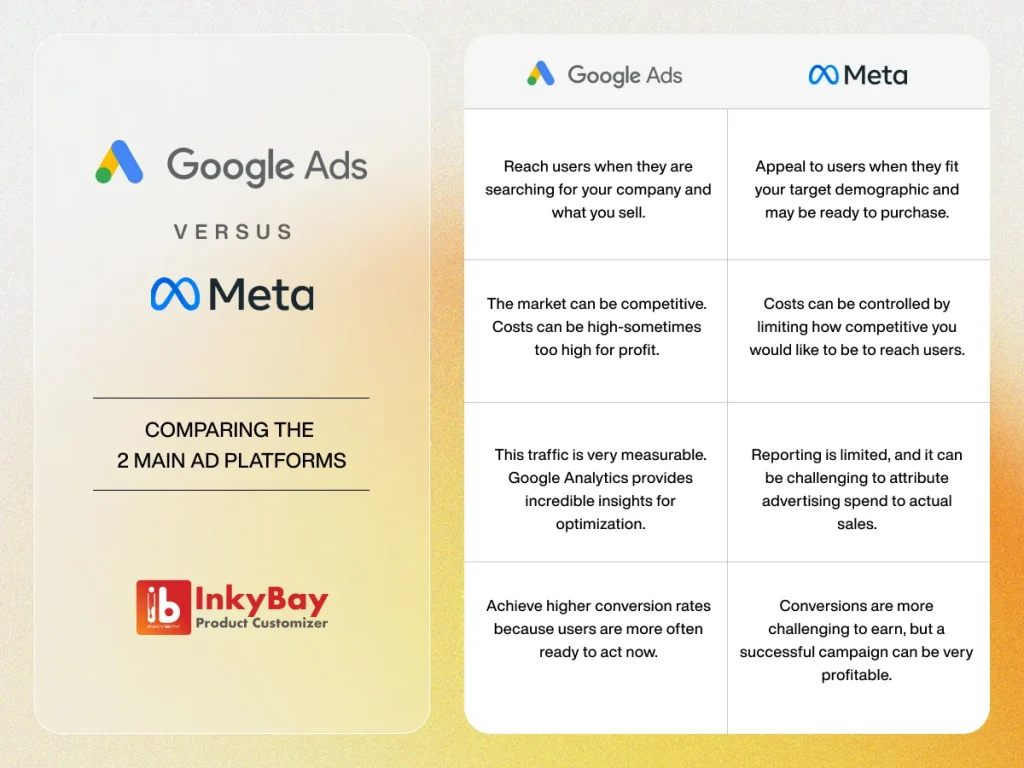
Last Updated on April 25, 2025 by Rakibul Islam
Has that ever happened to you that you have abandoned a shopping cart while you almost customized a product according to your preference, or maybe not but and you were reminded about that product through ads in social media?
I believe you’ve been through that. Yes, I have also been through this many times. The Statista report suggests 70% of shoppers abandon carts when purchasing personalized products. The ads remind us that unfinished shopping carts are known by retargeting ads. In this blog let’s explore how you can set effective retargeting ads for personalized products.
Why Retargeting Ads Work for Personalized Products
The fascination of personalized products is closely linked to customer choice and their emotions, and that’s why a unique marketing strategy is needed. In comparison to mass-produced goods, personalized products often have a higher perceived value, require tricky decision-making, and create a deep emotional bond all of which may extend the buying process. This is the point at which retargeting ads for personalized products become important.
1. Higher Perceived Value
Higher perceived value means longer consideration. High perceived value makes retargeting ads highly effective for personalized product remarketing. It’s been a long practiced thought that a product is worth its price because of uniqueness, quality, and emotional appeal.
This value is further strengthened by retargeting, which reminds the customers why the product is right for them. It justifies premium pricing, strengthens emotional connections, and reduces decision fatigue. Interest can be further developed by approaches like social proof, offers, and highlighting personalization. When consumers see repeated messaging emphasizing value, they’re more likely to complete their purchase.
In fact, higher perceived value drives engagement, making personalized products feel special, desirable, and worth the investment, leading to higher conversions through retargeting ads.
Complex Decision Making
Retargeting Ads for Personalized Products are highly effective due to complex decision-making involved in customization. Consumers take longer to choose personalized items, influencing factors like design, price, and uniqueness. By promoting product previews, testimonials, and personalized content, retargeting ads stimulates interest and decreases both hesitation and confusion.
It also eliminates decision fatigue and minimizes the perceived thoughts such as non-refundable purchases. This can be done by reassurance through reviews and guarantees.
Retargeting guides interested consumers to complete their purchase by highlighting the benefits of the product and features that build trust.
Moreover, by keeping the product in the top of consumers’ minds, retargeting ads for personalized products improve perceived value, streamline decision-making, and increase conversions.
Emotional Connection
Emotional connection is a key element in purchasing personalized products, as they carry sentimental value and uniqueness. Retargeting ads for personalized products tap into this by reminding consumers about their customization choices, reviving the excitement of owning something they created. When customers see their unfinished design or name on a product, it makes them rethink their personal significance, making them feel emotionally invested. This built connection increases the chances of completing the purchase.
Also, involving a narrative in the retargeting ads that visualizes how others cherish their customized items strengthens the connection, making consumers feel their purchase is meaningful and special rather than just another shopping experience.
Step by Step Guide Setting Up Retargeting ADs
Step 1# Define Your Audience Segments

Defining audience segments is the first step in setting up effective retargeting ads for personalized products. Not all visitors have the same intent, so segmenting them in parts ensures that messaging is connected to every segment that aligns with their behaviors. Cart abandoners are the ones who expressed high purchase intent by adding personalized products to their carts but left without completing the purchase. Targeting them with gentle reminders or exclusive offers can make them rethink their interest and encourage checkout.
Product page viewers are the ones who explored customization options but didn’t take further action. Retargeting them with engaging visuals of attractive designs or may be limited-time offers can motivate them to return and personalize their product and complete the purchase. Converted buyers may create an opportunity for upselling, encouraging them lk, ` to expand their collection could be a great idea of implementing retargeting ads for personalized products.
Tracking user interactions with Facebook Pixel or Google Ads Remarketing Tag enables precise segmentation, ensuring retargeting ads are reaching to the right audience at the right moment for maximum engagement and conversion.
Step 2# Choose Right Platform
Choosing the right platform for your retargeting marketing strategy and retargeting ads for personalized products is very important to ensure that they reach the most relevant audience. Different platforms serve a different purpose based on product type and user behavior. Facebook and Instagram are highly effective for vi-sually driven products such as custom jewelry or artwork. These platforms allow businesses to use carousel ads, showing multiple personalization features to attract customers.

Google Display Network is best suited for targeting users across various websites, serving dynamic ads that feature the exact personalized product they previously viewed, increasing the chances of conversion. LinkedIn is the best choice for B2B personalized products since it reaches professionals and businesses interested in corporate gifts or branded clothings.
However, a strategic approach, such as using Instagram Stories ads with a “Swipe Up to Customize” call-to-action can create an interactive experience that encourages users to finalize their design and complete their purchase.
Step 3# Compelling AD Creatives
Crafting actionable and compelling ad creatives is probably one of the most significant factors for the success of Personalized product ads, if not the most! These creatives revive interest and motivate customers to take action; expectedly by completing their customized product order and making the payment.
Moreover, personalization grabs attention; showing the customization process, such as transforming a blank product into a personalized design, helps buyers visualize owning something truly unique.
Additionally, the term “fear of missing out” (FOMO) triggers urgency. Phrases like “Only 3 Customizable Hoodies Left!” tap into this sense of urgency effectively. Besides, authenticity builds trust; using user-generated content, such as photos of satisfied customers, reassures potential buyers about product quality and the shopping experience. Plan to executing these strategies alongside engaging creatives and clear calls to action, like “Shop Now” or “Claim Your Discount.
Step 4# Set Up Dynamic Retargeting
Dynamic retargeting ads for personalized products is a powerful tool that displays the exact product a customer previously viewed, ensuring a personalized and relevant experience. Dynamic retargeting for custom items is a powerful tool that displays the exact product a customer previously viewed, ensuring a personalized and relevant experience. For example, if a customer admired a Real Madrid themed customized mug, the ad would showcase the mug in a similar color, reigniting interest.
This strategy is effective because it directly connects customers to the items they care about, enhancing relevance and increasing the likelihood of conversion. Integrating dynamic retargeting is very simple using platforms like Shopify with Facebook Dynamic Ads, enabling seamless automation.
Step 5# Optimize Landing Pages
Optimizing landing pages is very important for turning retargeted ad traffic into sales by creating a swift and relevant experience. Instead of driving users to the homepage, guide them to the exact product page they abandoned, with pre-filled customization fields as they left them. This approach reduces complexity and minimizes the chances of further abandonment. Additionally, adding urgency, such as a timer with “Complete your order in 15 minutes for free shipping” encourages immediate action by using the fear of missing out (FOMO).
However, ensure that your landing page is user friendly and includes key elements like pre-loaded customization options, transparent pricing without hidden fees, and real testimonials from buyers of similar products to build trust. By addressing customers’ needs with personalization, clarity, and urgency, you can enhance their shopping journey, significantly increasing conversion rates when implemented with a plan.
Best Practices for Retargeting Personalized Products
1. Avoid Ad Fatigue
To avoid ad fatigue in retargeting personalized products, it’s important to manage the frequency and typos of your ads carefully. Setting frequency limitations, such as limiting exposure to three ads per user per day, helps prevent overexposure, which can irritate potential customers. Additionally, reshuffling your ad creatives every two weeks ensures that your content remains engaging and relevant, reducing the chance of monotony.
Rotating designs, rewriting targeted messages, or visuals keeps your audience interested while maintaining alignment with your brand’s message. This strategy not only enhances user experience but also sustains long-term ad effectiveness by balancing exposure and engagement. By proactively addressing ad fatigue, you can keep your ad campaigns fresh, improve customer perception, and ultimately increase conversion.
2. A/B Test Ads Materials
A/B testing is a vital practice for refining retargeting strategies for personalized products, as it identifies what resonates most with your audience. Start by comparing personalized ads, such as “Finish Your Design, Sarah!” which add a tailored touch, against generic ones like “Customize Your Mug,” to determine which approach drives higher engagement. Next, experiment with value propositions by testing offers like discounts (e.g., “20% off your next order”) against incentives such as free personalization.
These tests provide valuable insights into customer preferences, enabling you to optimize campaigns for better results. By continuously experimenting with ad styles, messages, and offers, you can enhance relevance, improve click-through rates, and ultimately maximize conversions, ensuring your retargeting efforts are both strategic and effective.
These tests provide valuable insights into customer preferences, enabling you to optimize campaigns for better results. By continuously experimenting with ad styles, messages, and offers, you can enhance relevance, improve click-through rates, and ultimately maximize conversions, ensuring your retargeting efforts are both strategic and effective.
Read Our Latest Blogs-
👉🏻 How to Create Effective Shopify Ads
👉🏻 Benefits of Using Visual CPQ for Your Shopify Store
👉🏻 How Predefined Template Boost Customizable Products in Ecommerce
Conclusion
Retargeting ads play a crucial role in driving sales for personalized products. Thoughtful planning has shown that businesses offering personalized products can still get the benefits of retargeted ads. Steps such as defining the target audience, selecting the right platforms, crafting compelling ad copies, using dynamic retargeting, and optimizing landing pages work together to enhance conversions. However, it is also important to ensure that customers do not feel irritated by too much ads, and a thorough A/B testing must be implemented to measure and refine the impact of these campaigns.

